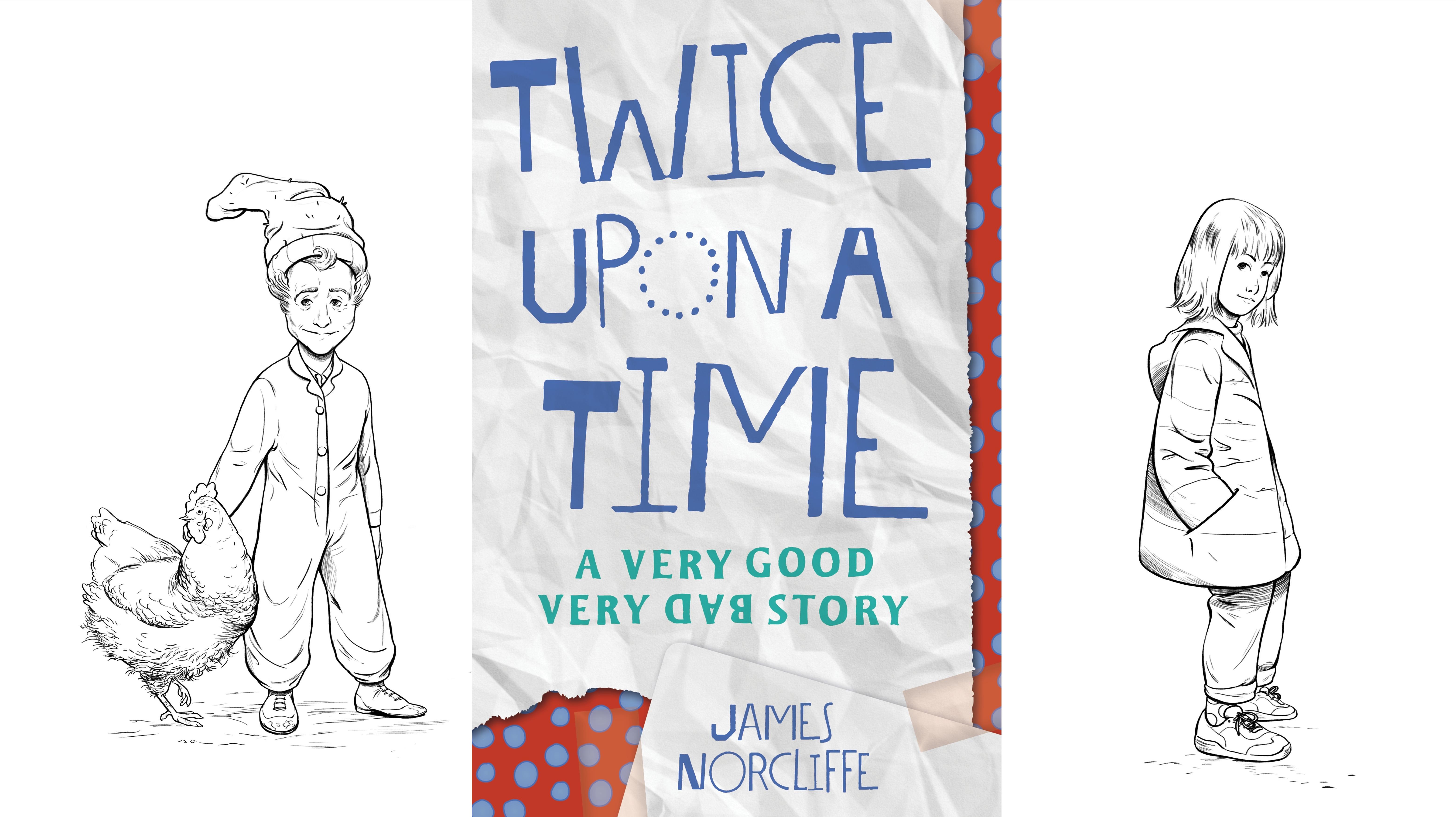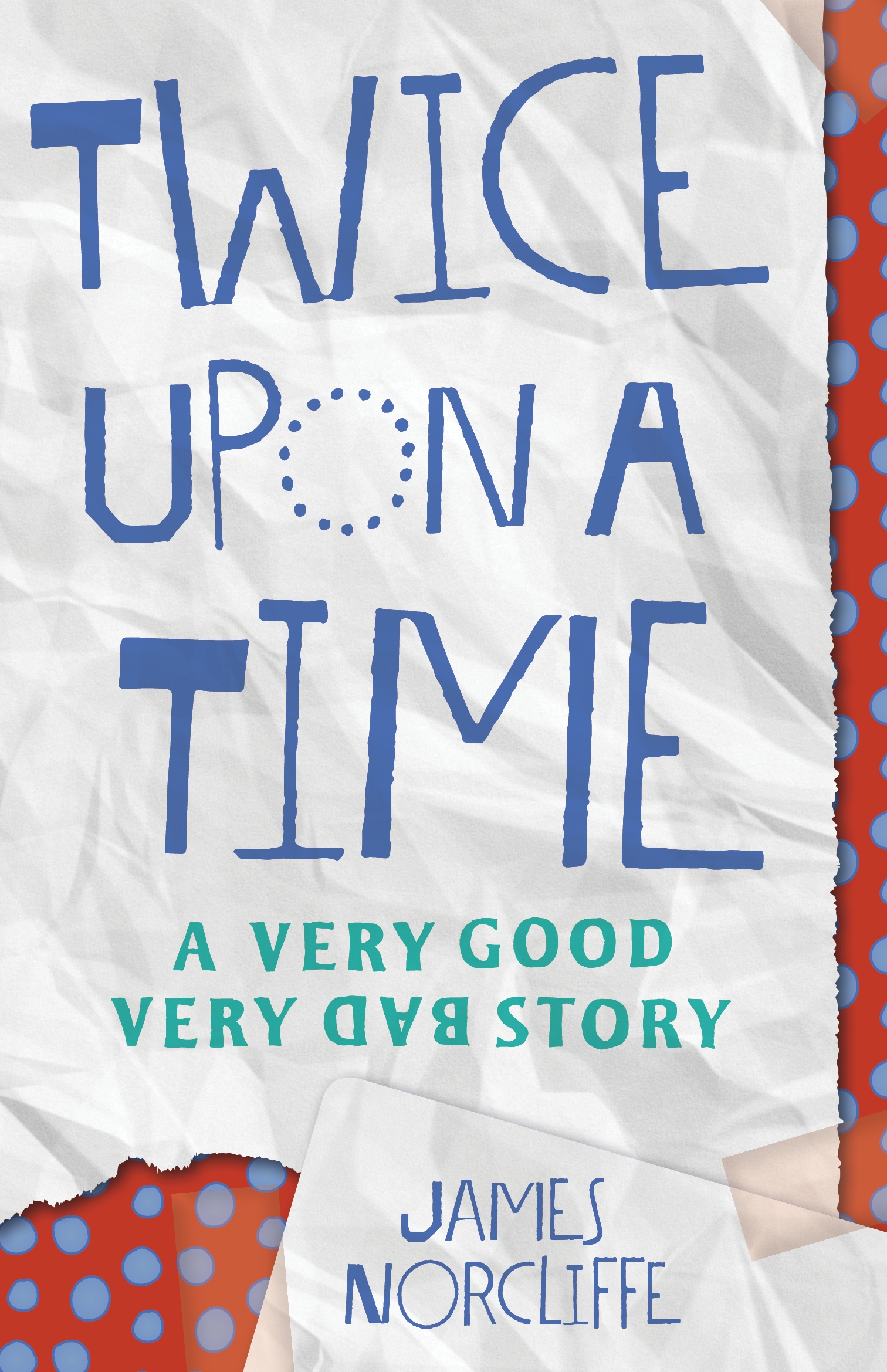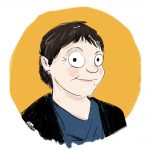Poet and children’s writer James Norcliffe is a national treasure. He has been involved in the School for Young Writers in Christchurch for many years, and releases both poetry and junior fiction books regularly. Sarah Forster reviews his latest novel for children.

James Norcliffe specialises in strong, wild characters and a whiff of magic. The Loblolly Boy won the Junior Fiction Book of the Year in 2010 with just that mix. His new title, Twice Upon a Time, is no exception.
Ginny is having a nap one afternoon in the hammock when she becomes aware of somebody visiting. Thinking it would be Pop (Pop by name, pop by nature), she is surprised but not overly alarmed to find a small gnomish creature there instead, with no more idea than Ginny has of what he is doing there or how he got there. Ginny sends him on his way, but soon enough Pop is revealed to have disappeared, and Digger Dagger (for this is the gnome’s name) figures perhaps he is there because of this disappearance, and offers to help her find him.
Thus begins a wild journey that actually takes place within a few blocks of Ginny’s house, in a back-to-front world. Don’s Dairy has become Nod’s Diary; the Fish N Chip shop has become the Chip N Fish shop; the Fun Fair has taken a sinister turn (don’t go in the Ghost Train) and the Very Good Very Bad Storyteller Sod and the Very Bad Very Good Storyteller Nod are keeping our characters on our toes.
Over the course of the book, Ginny and Digger Dagger are set three riddles which they must solve to find out where Pop is. They are helped by Nod occasionally, Topper rarely, along with Pop’s dog and a girl who they meet at the Chip and Fish Shop.
I think Twice Upon a Time is going to be a boon to every teacher and bookseller who has wondered what to recommend after the ‘Faraway Tree’ series. However, the language has a lot more depth and imagination than Blyton’s and I can see teachers rubbing their hands together as they get the kids involved dissecting the tricks and trips of the tongue Norcliffe uses to bring his characters to life. Digger Dagger and Ginny often get caught up in puns, and the language is playful and delicious throughout.
Twice Upon a Time is going to be a boon to every teacher and bookseller who has wondered what to recommend after the ‘Faraway Tree’ series.
The dialogue snaps along:
‘You’re the one who knows the end of the story, not me. You’re supposed to be the storyteller!’
‘Am I?,’ asked Sod.
‘A very good one,’ said Digger Dagger.
‘A very bad one,’ said Ginny.
‘A very tricky one,’ smiled Aesop Sod.
‘And I do wish you two would stop jumping.’
…
’We’re not jumping,’ said Digger Dagger.
‘Oh, but you are,’ said Sod.
‘You’re jumping to conclusions.’
It also bears some resemblance to Alice in Wonderland and The Phantom Tollbooth. The quest Digger Dagger and Ginny find themselves on is similar to that in Alice in Wonderland – they stay close to home; they are searching for a missing character. The way that Norcliffe opens up storytelling mores is similar to Dictionopolis in The Phantom Tollbooth.
Twice Upon a Time is also a good length as a classroom read-aloud. The ends of chapters leave you hanging, but are ideally formed in length and structure for classes or indeed bedtime stories. I can even see the possibility of a stage adaptation: the set isn’t complex, the dialogue is extremely strong, and the wordplay witty enough to get a few laughs from the audience. My 6-year-old loved it.
Do you need any more convincing?! I reckon you should put Twice Upon a Time on your shelf alongside the classics: it’s traditional quest storytelling at its best, from a master of the form.


Sarah Forster has worked in the New Zealand book industry for 15 years, in roles promoting Aotearoa’s best authors and books. She has a Diploma in Publishing from Whitireia Polytechnic, and a BA (Hons) in History and Philosophy from the University of Otago. She was born in Winton, grew up in Westport, and lives in Wellington. She was a judge of the New Zealand Book Awards for Children and Young Adults in 2017. Her day job is as a Senior Communications Advisor—Content for Te Herenga Waka—Victoria University of Wellington.



